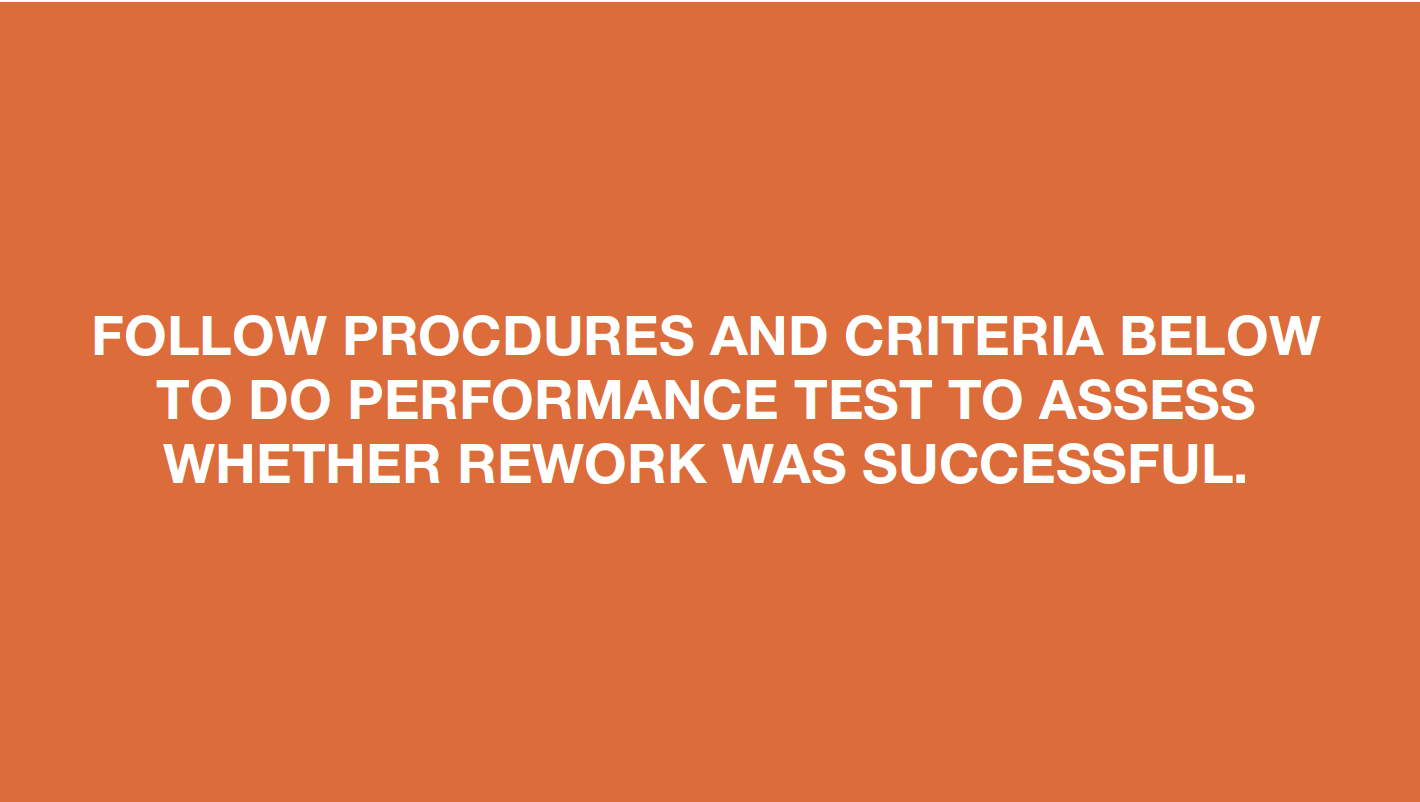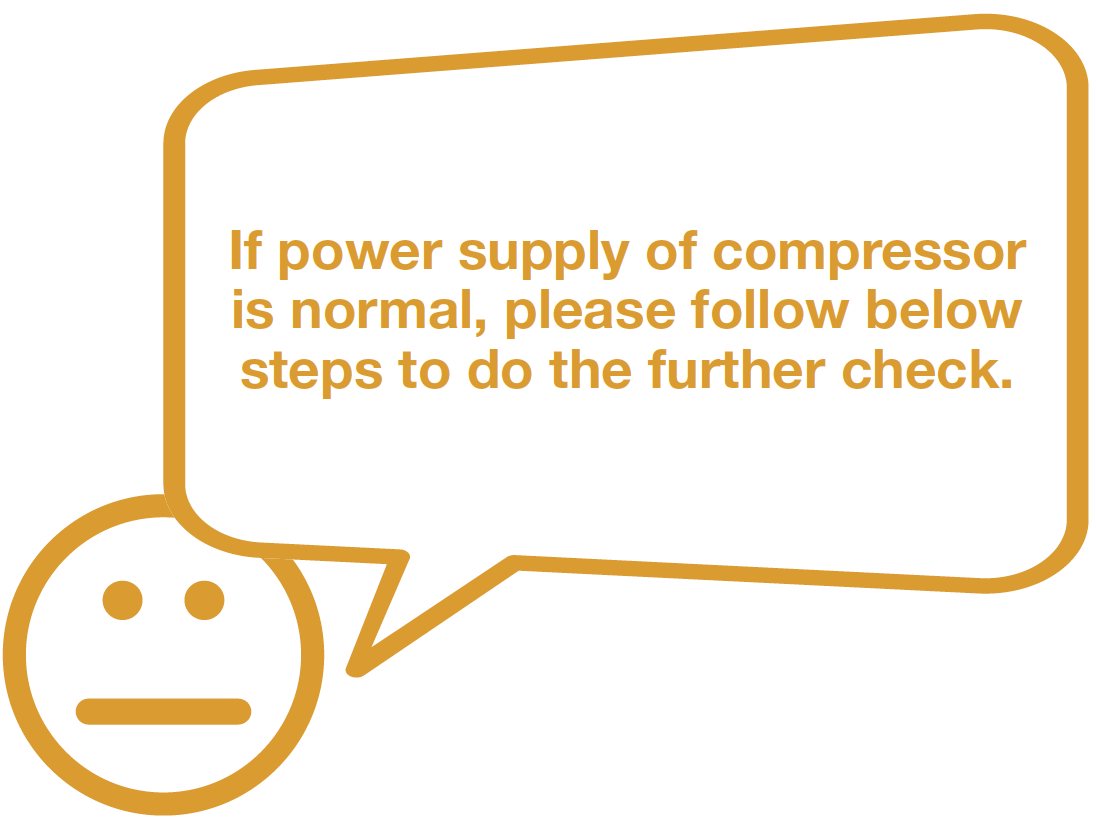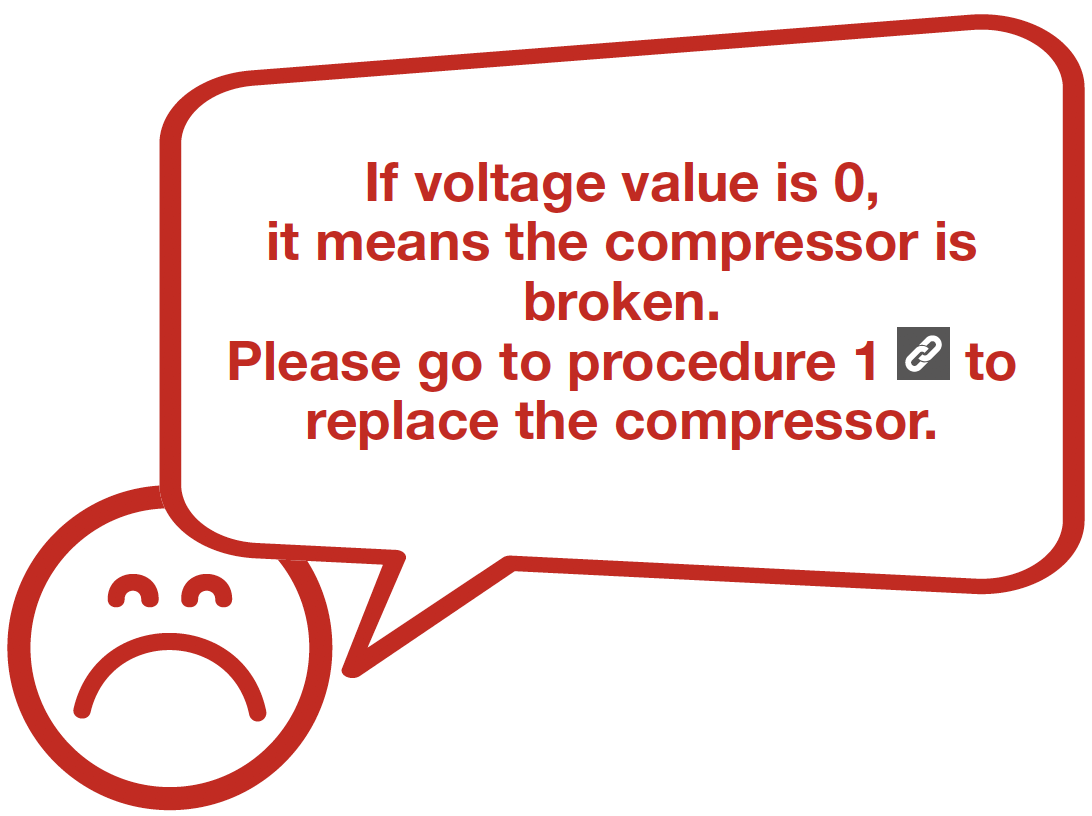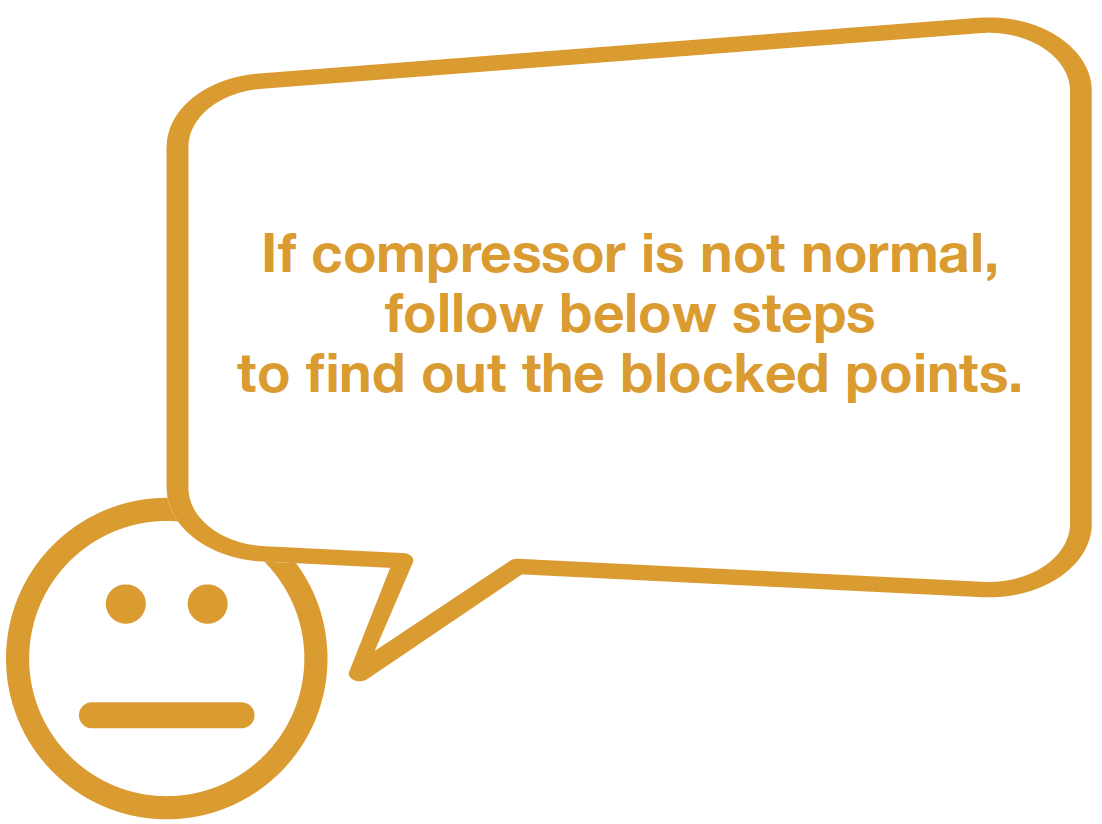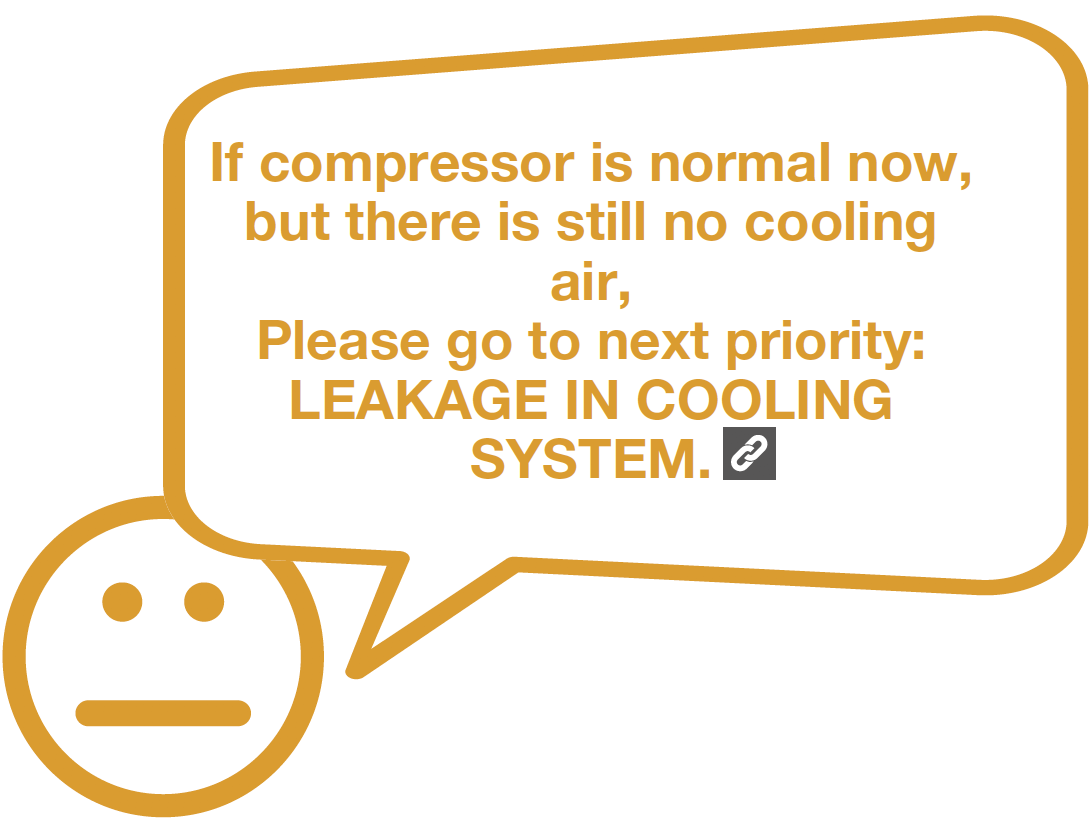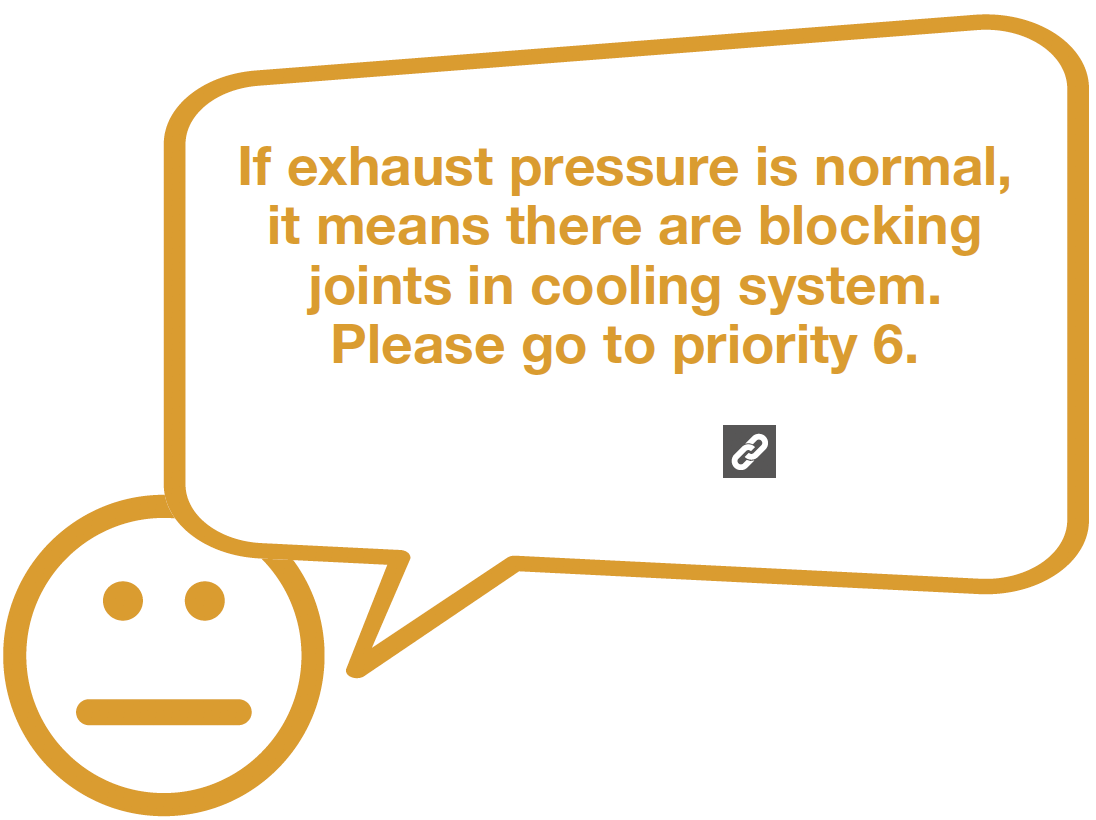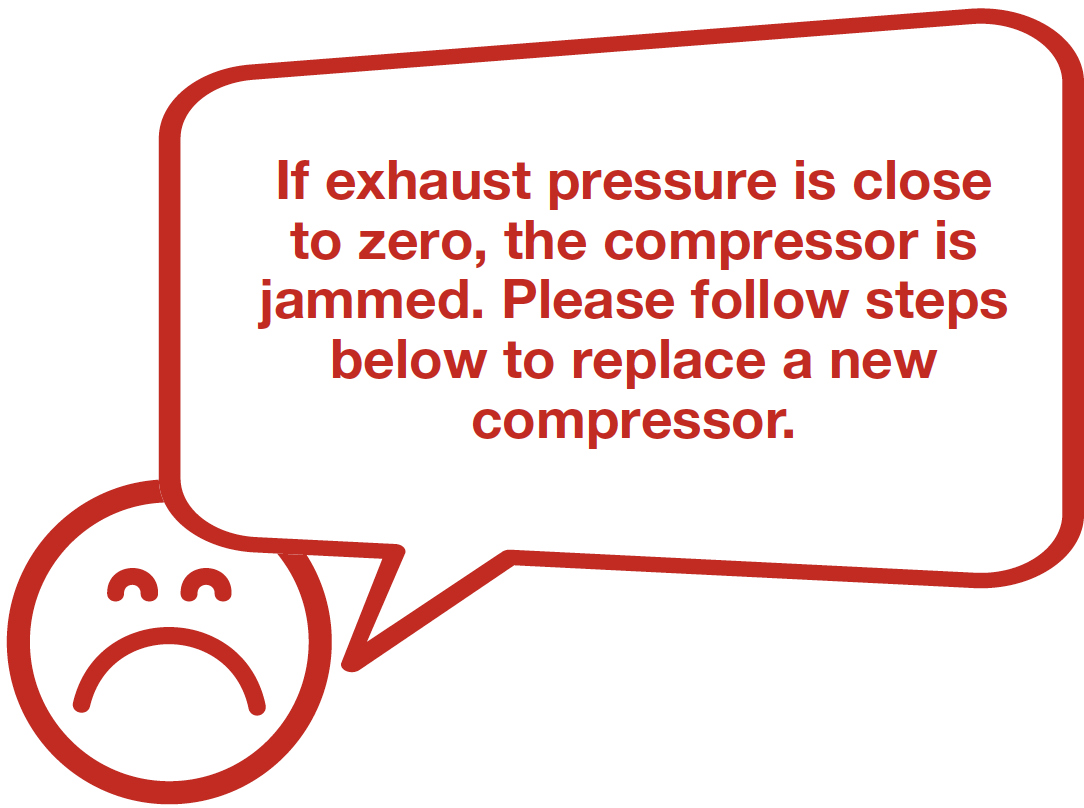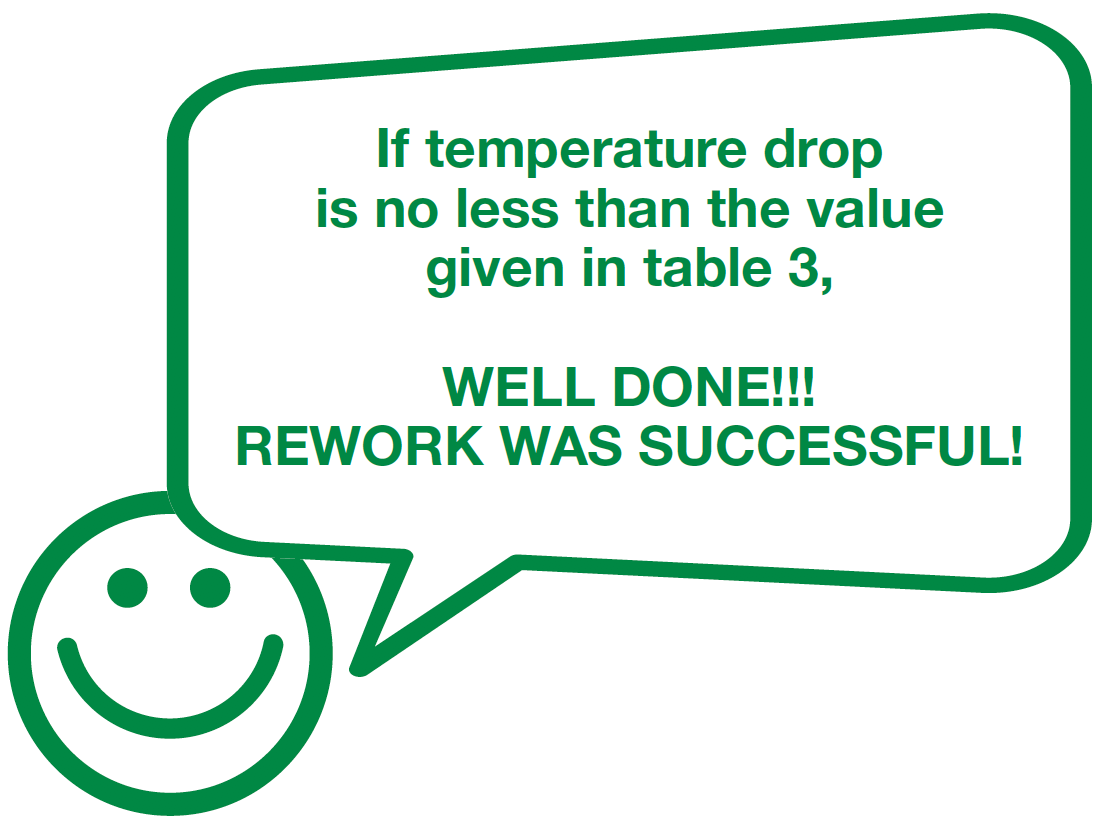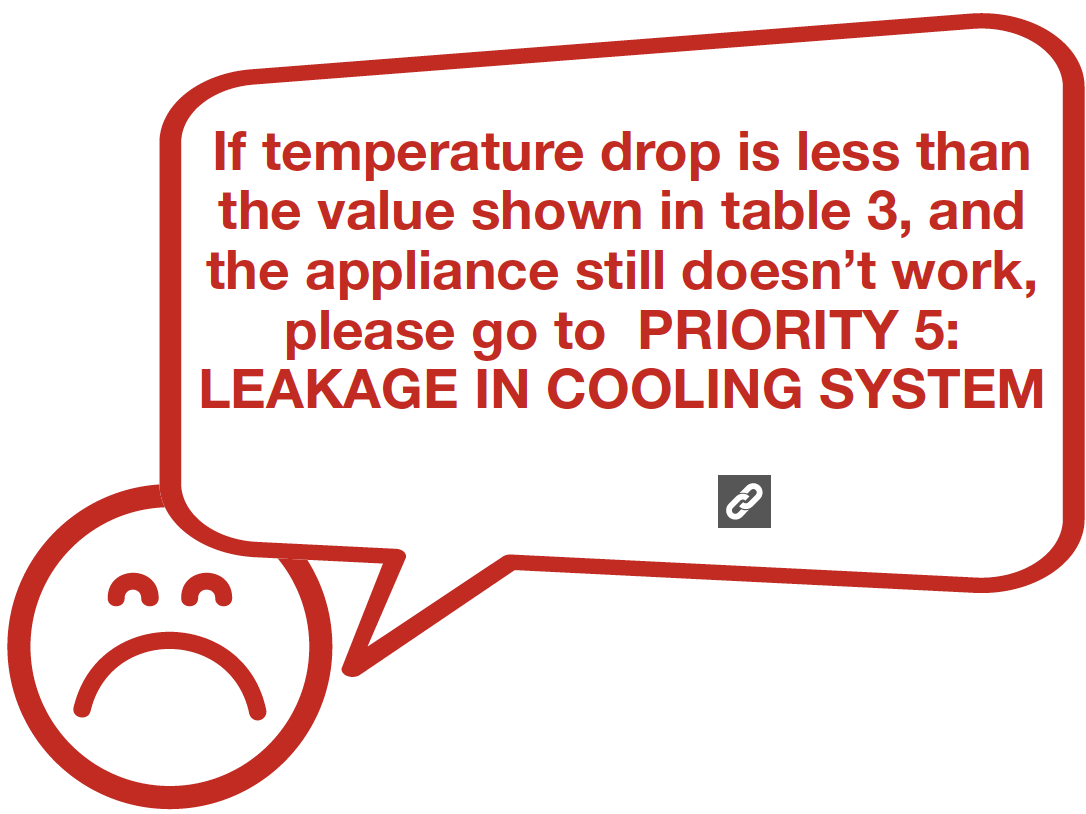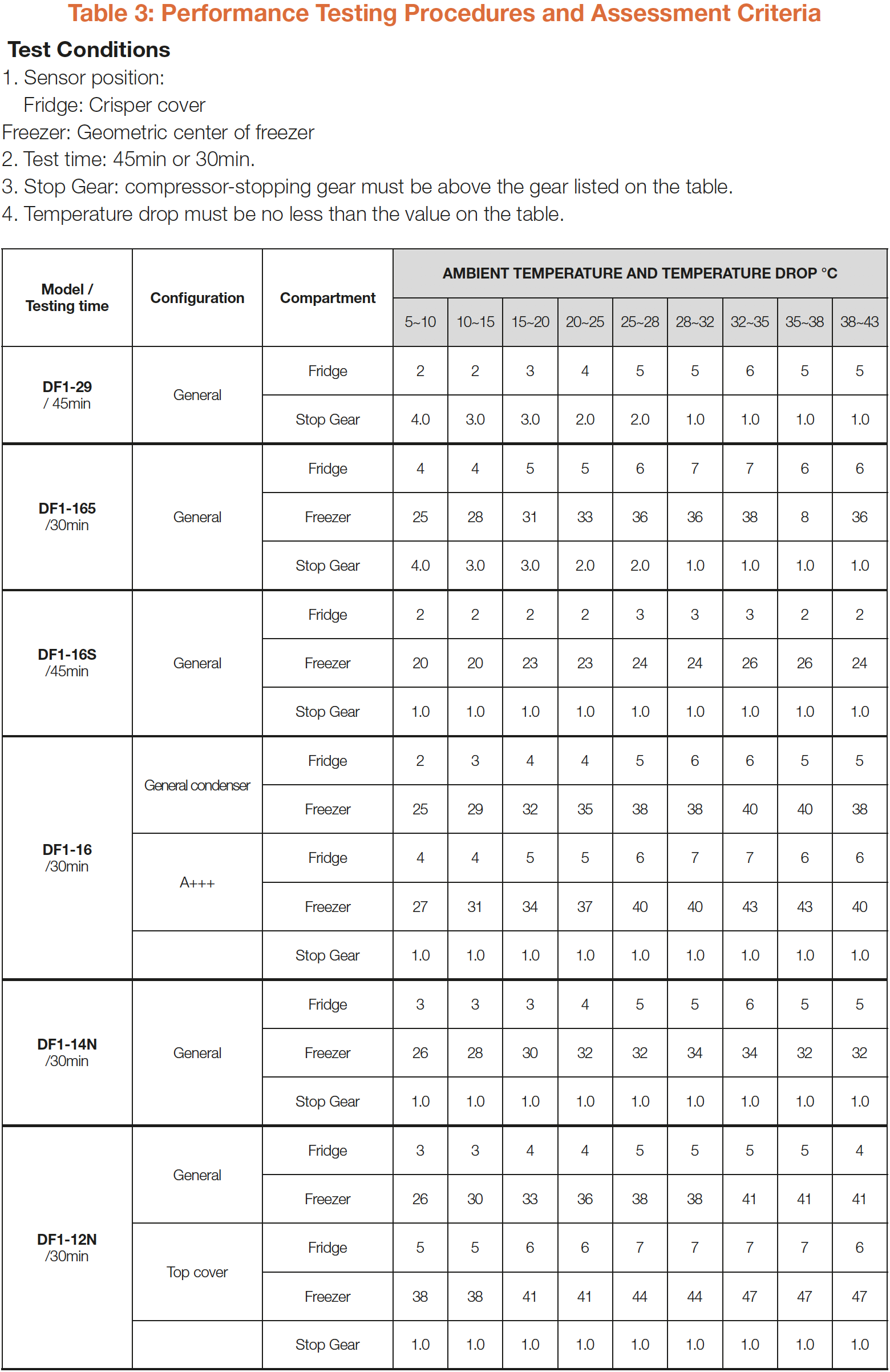


CHECK AND TEST 1
Step 1
Plug in, the compressor starts, but the protection is activated immediately, and it cannot work normally. Put hand onto compressor, no shaking can be felt.

Step 2
Measure the AC voltage of the compressor with a multimeter. If voltage of three terminals is almost the same (100V~200V), it means power are transferred to compressor.
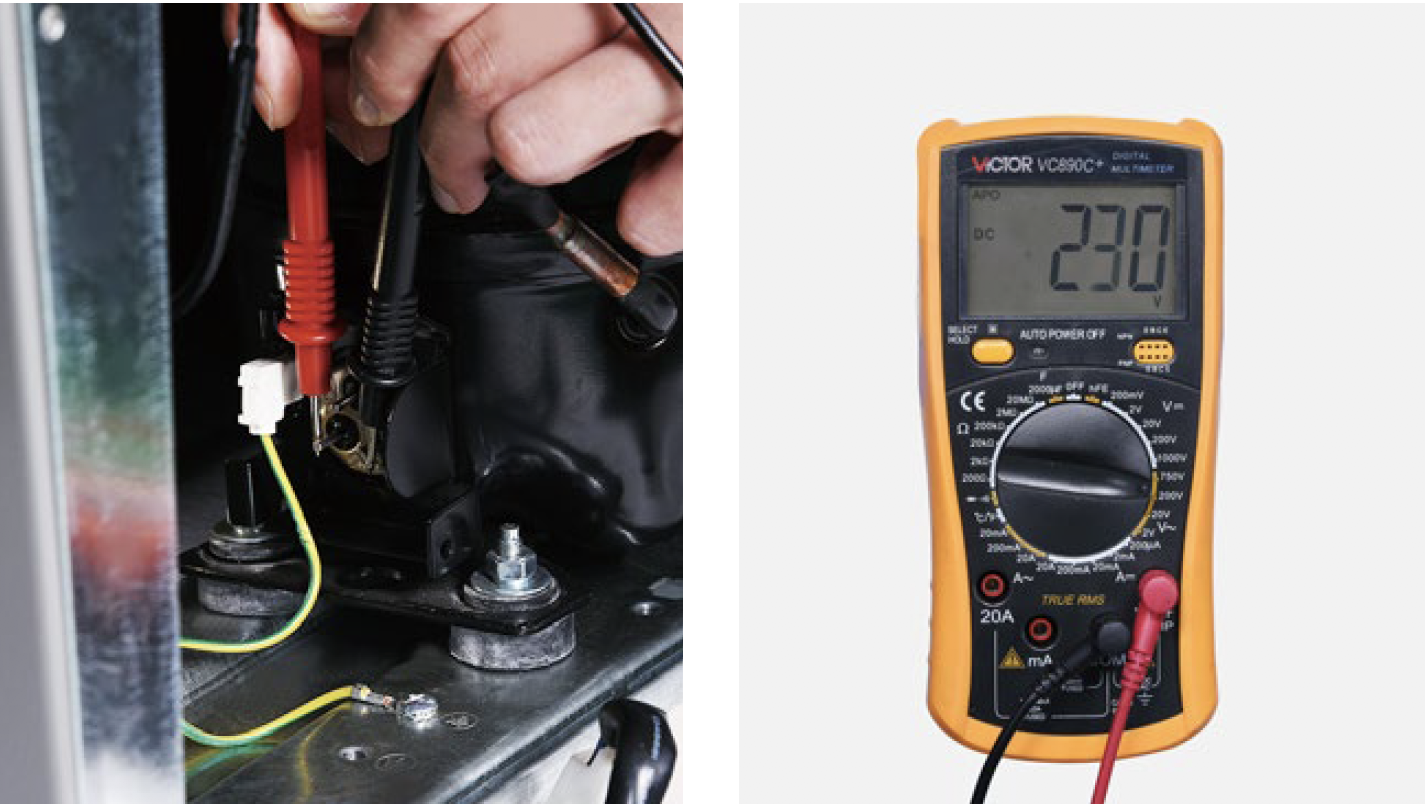
NOTE
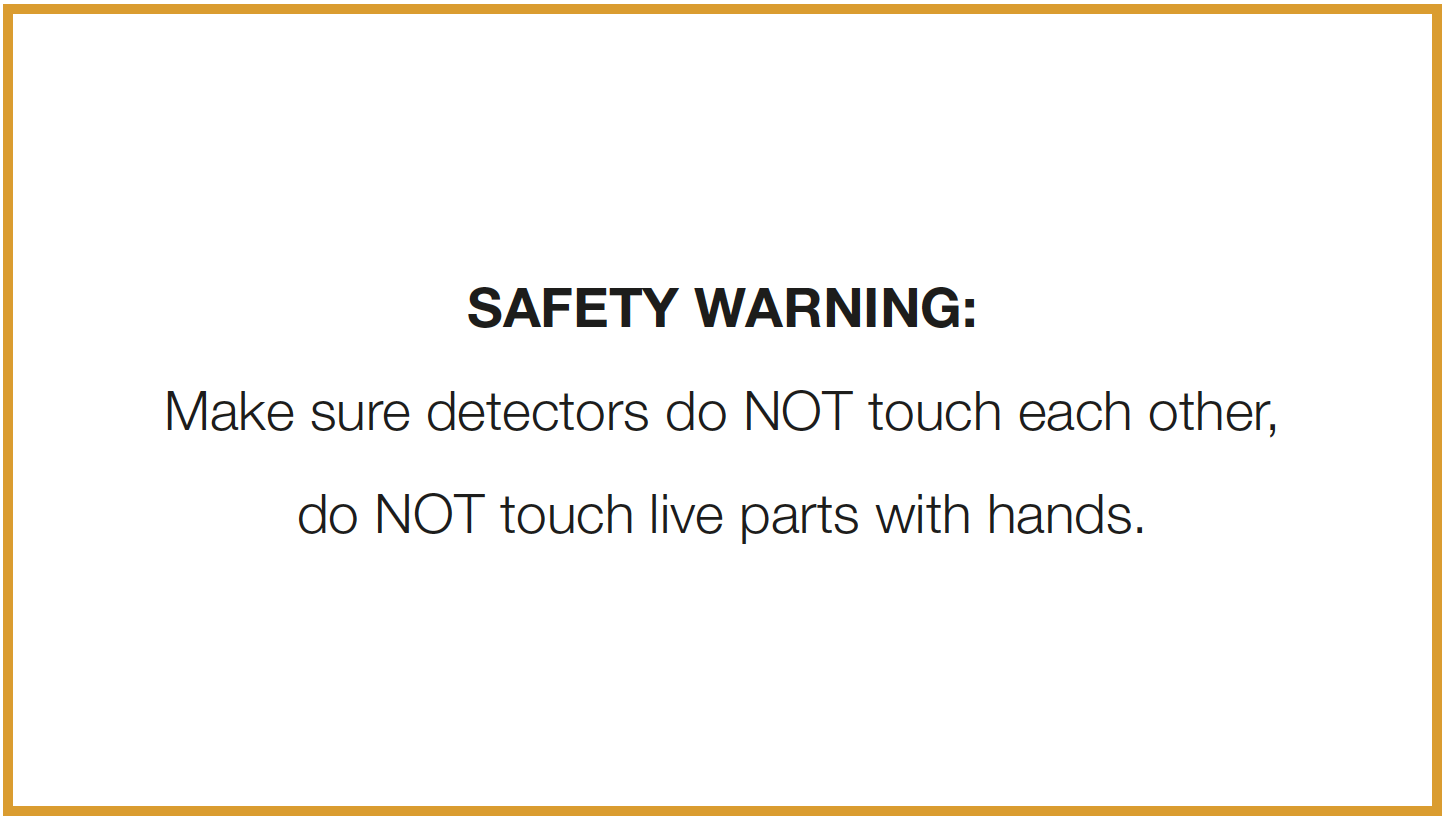

DIAGNOSIS 1
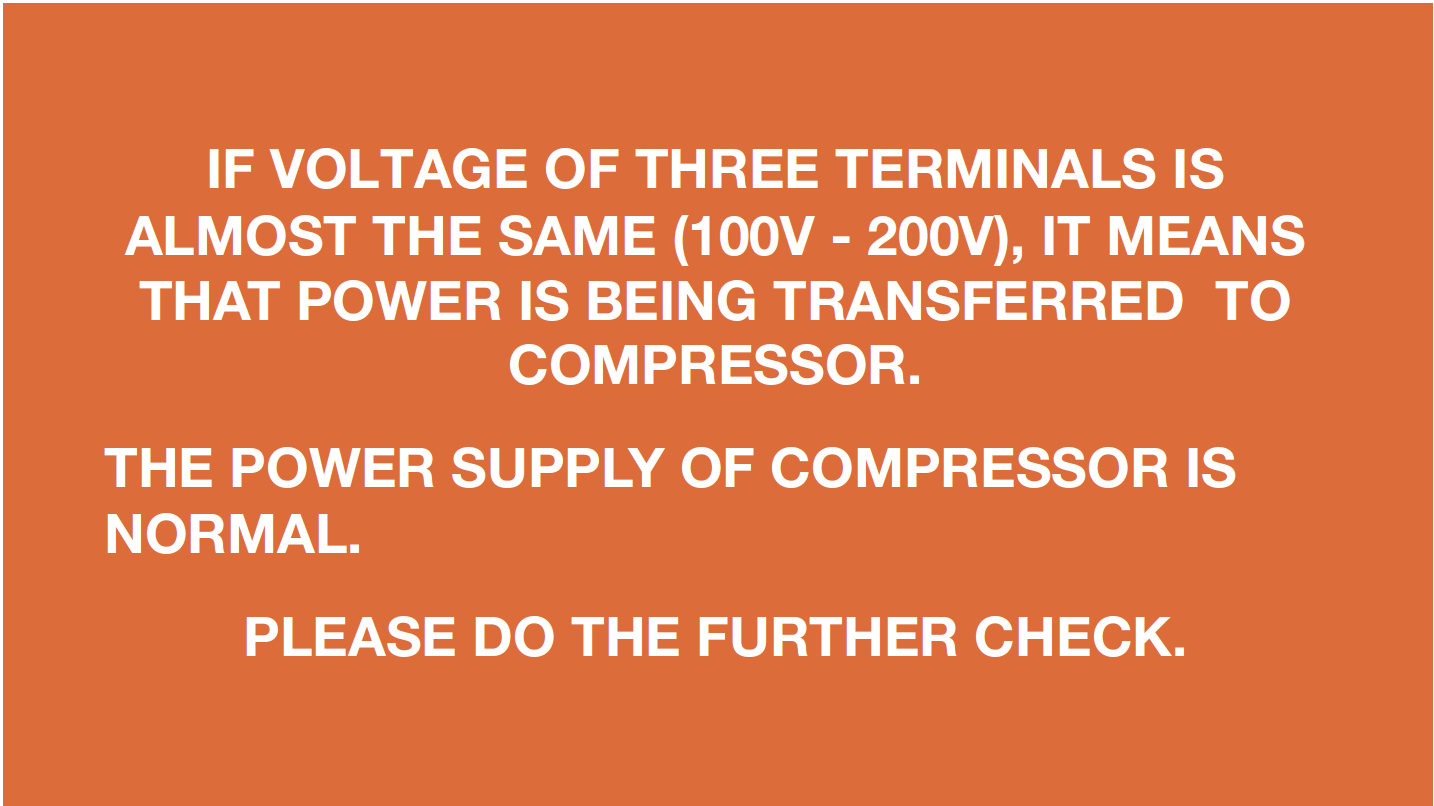
CHECK AND TEST 2
Step 1
Wait a few minutes, repeatedly power on and off several times, the compressor starts but activates protection.
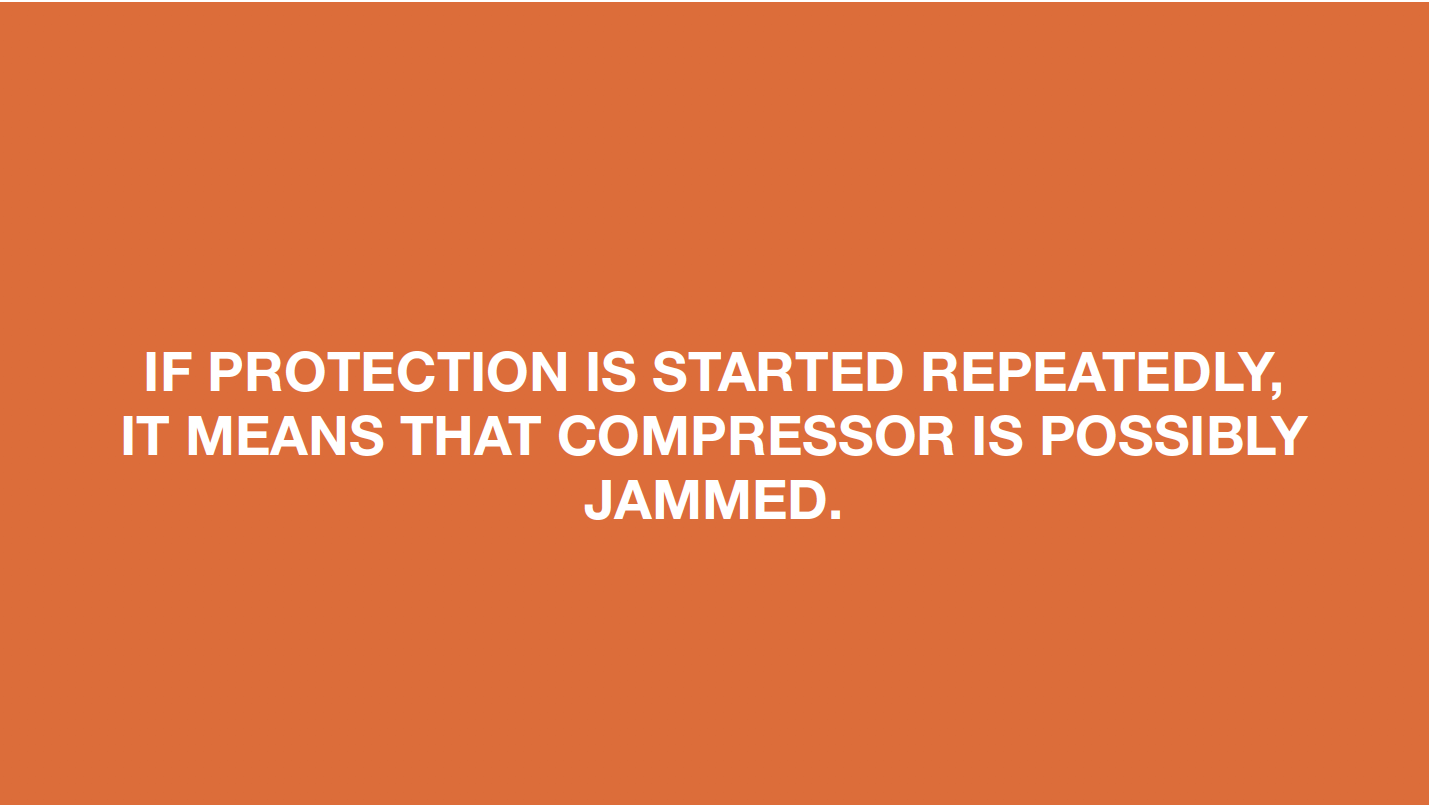

DIAGNOSIS 2
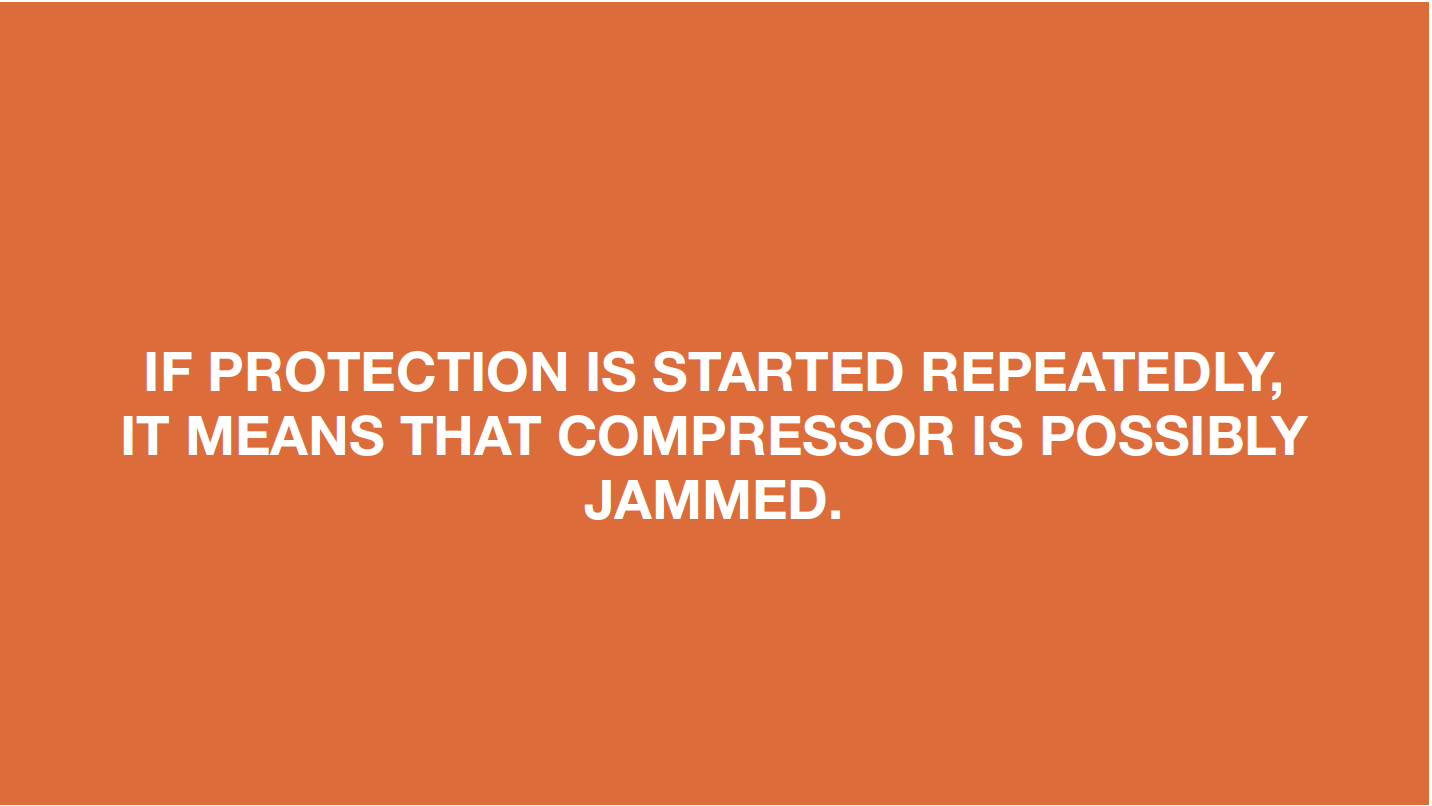
CHECK AND TEST 3
Step 1
Cut off capillary to discharge refrigerant.
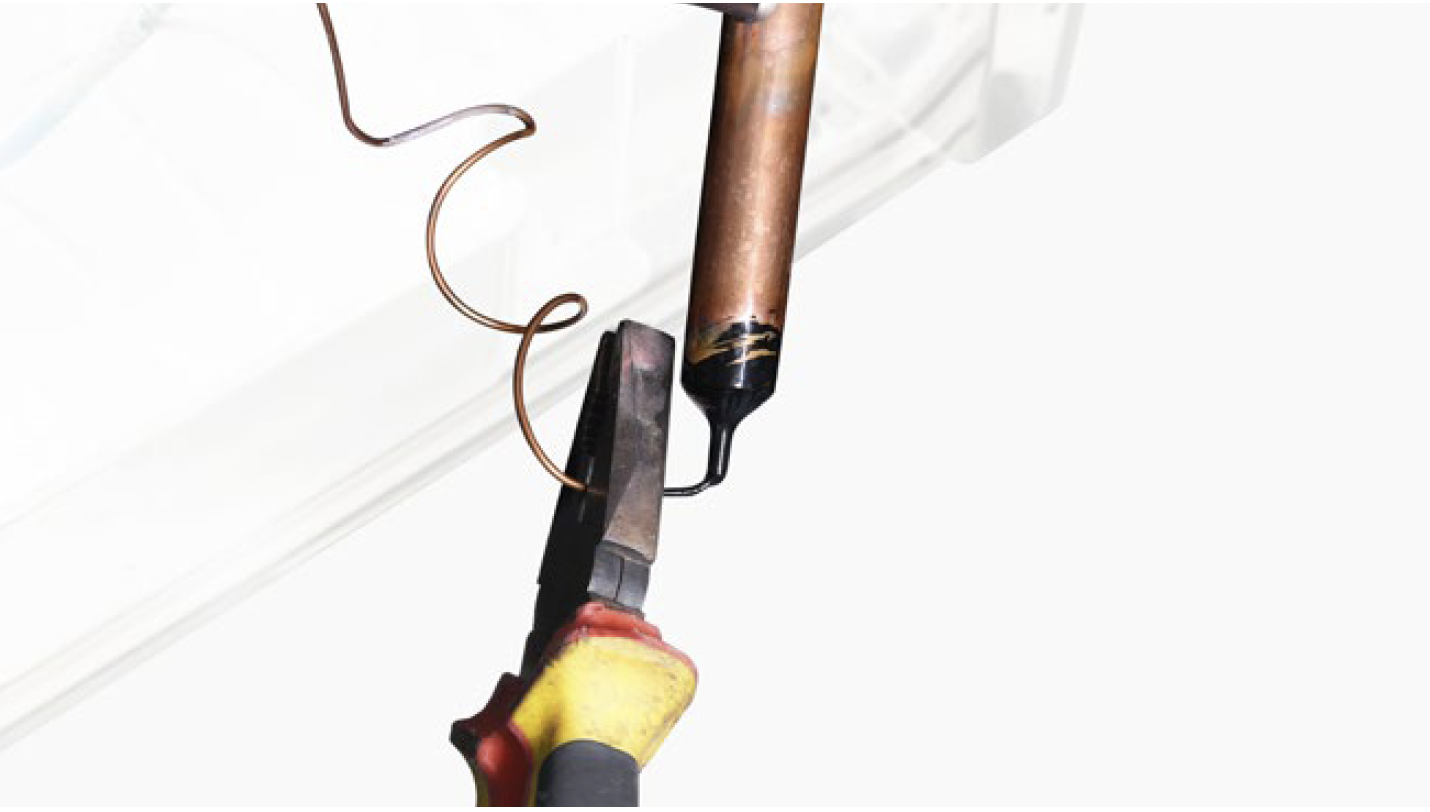
Step 2
Cut off suction pipe and exhaust pipe.
Step 3
Power up the compressor and feel the exhaust pressure of the exhaust pipe with a paper.


DIAGNOSIS 3
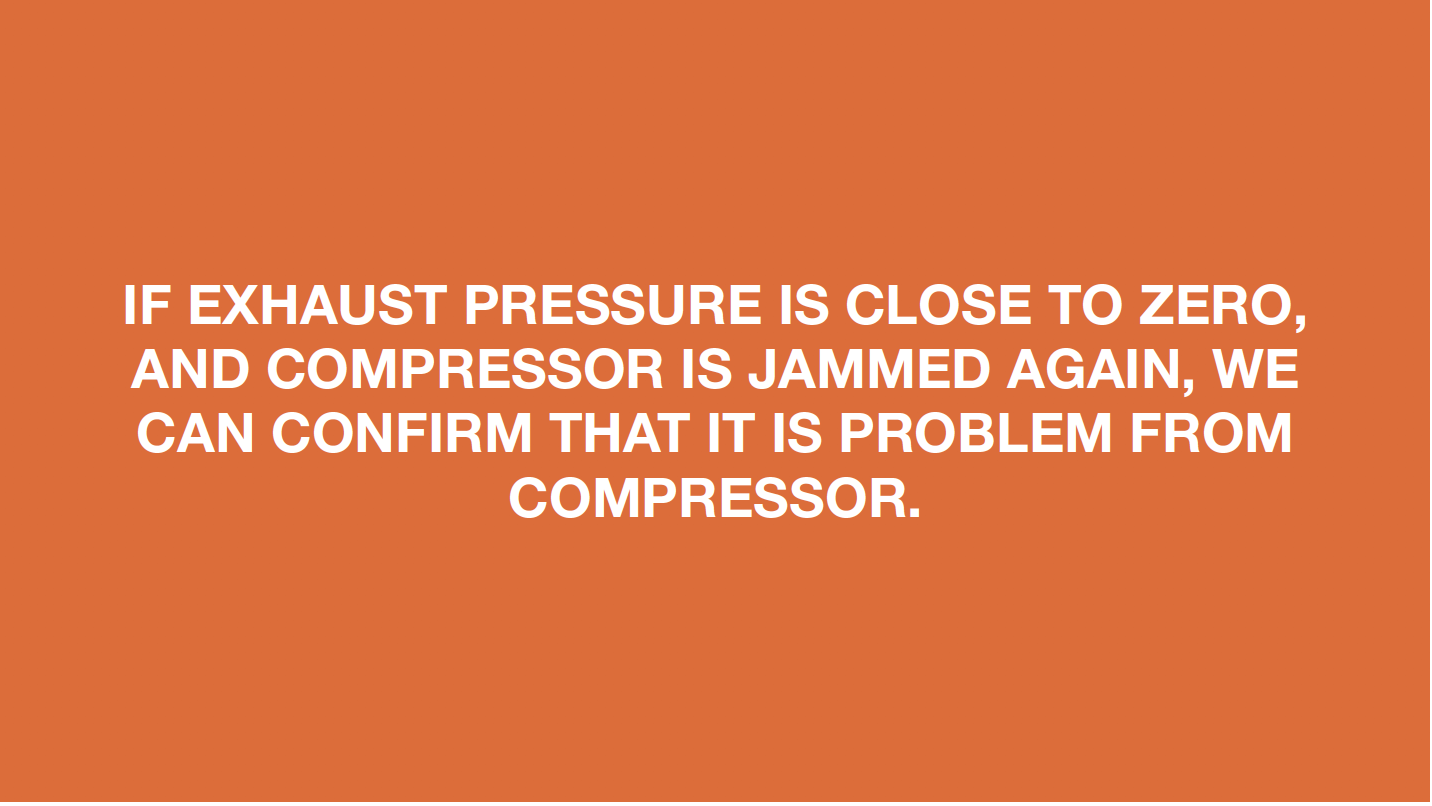
PROCEDURE 1
Step 1
Unscrew terminal cover.
Step 2
Remove terminal cover.
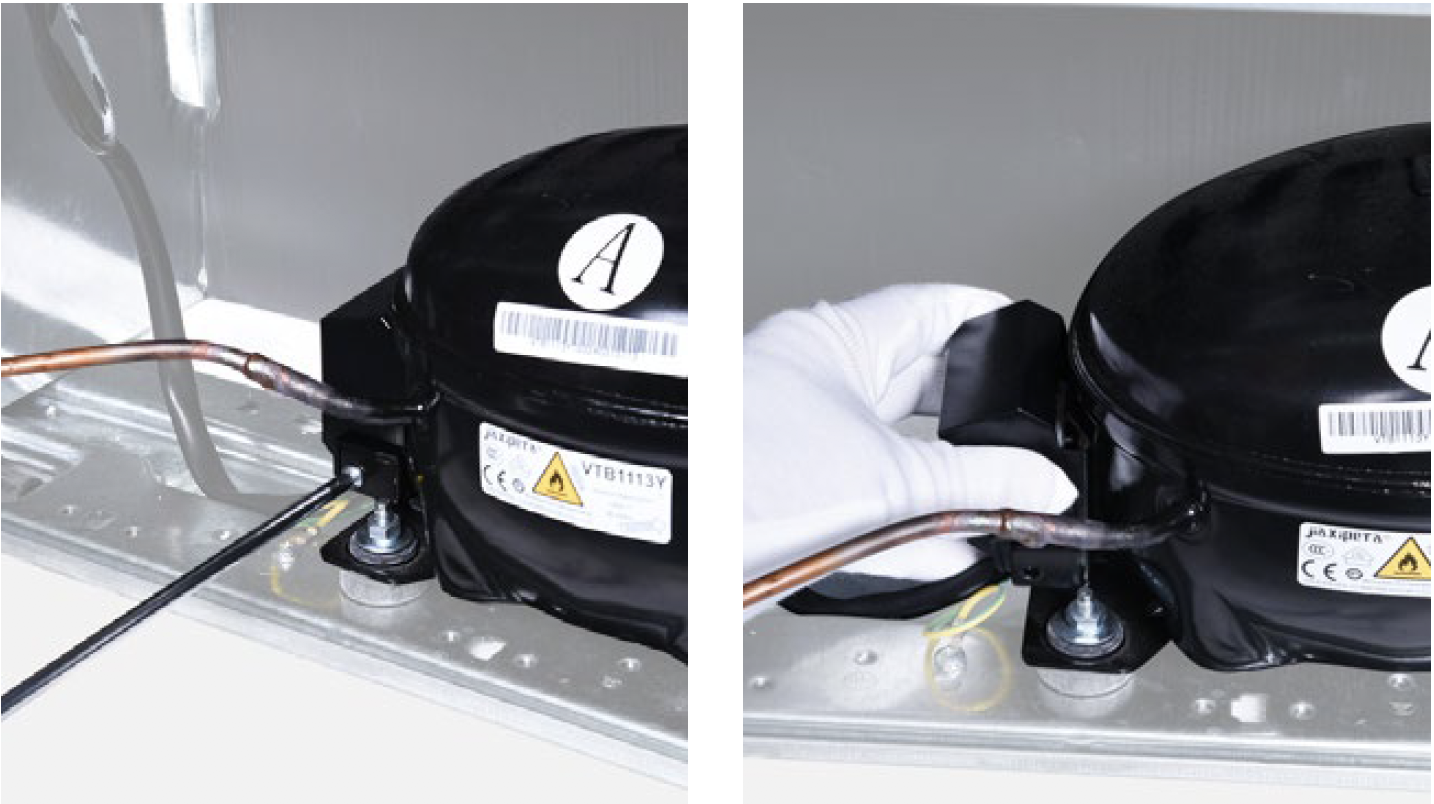
Step 3
Take out protector and starter.

Step 4
Unscrew earthing wire.

Step 5
Unscrew nut of compressor.

Step 6
Put on a new compressor and fix nuts onto compressor.
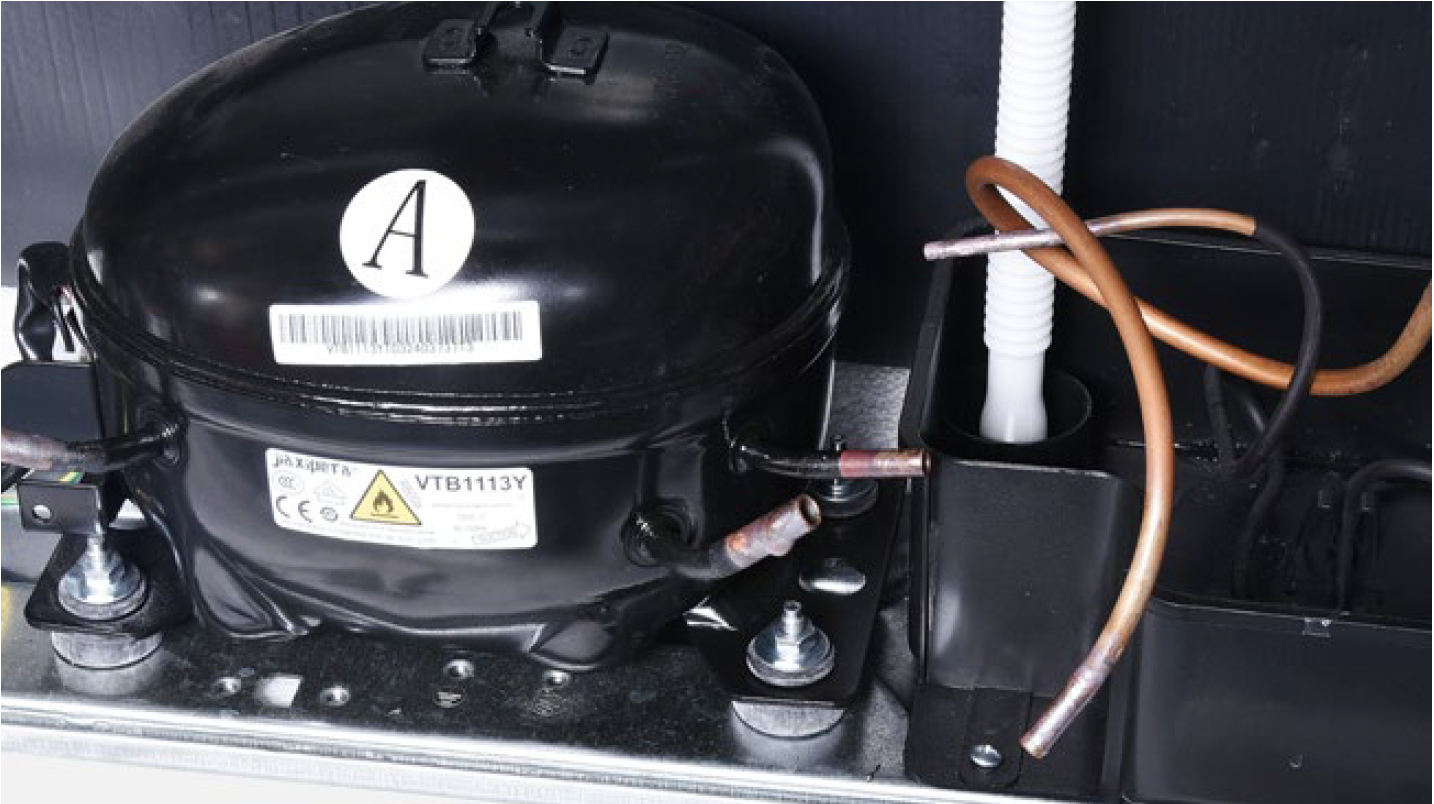
Step 3
Braze.
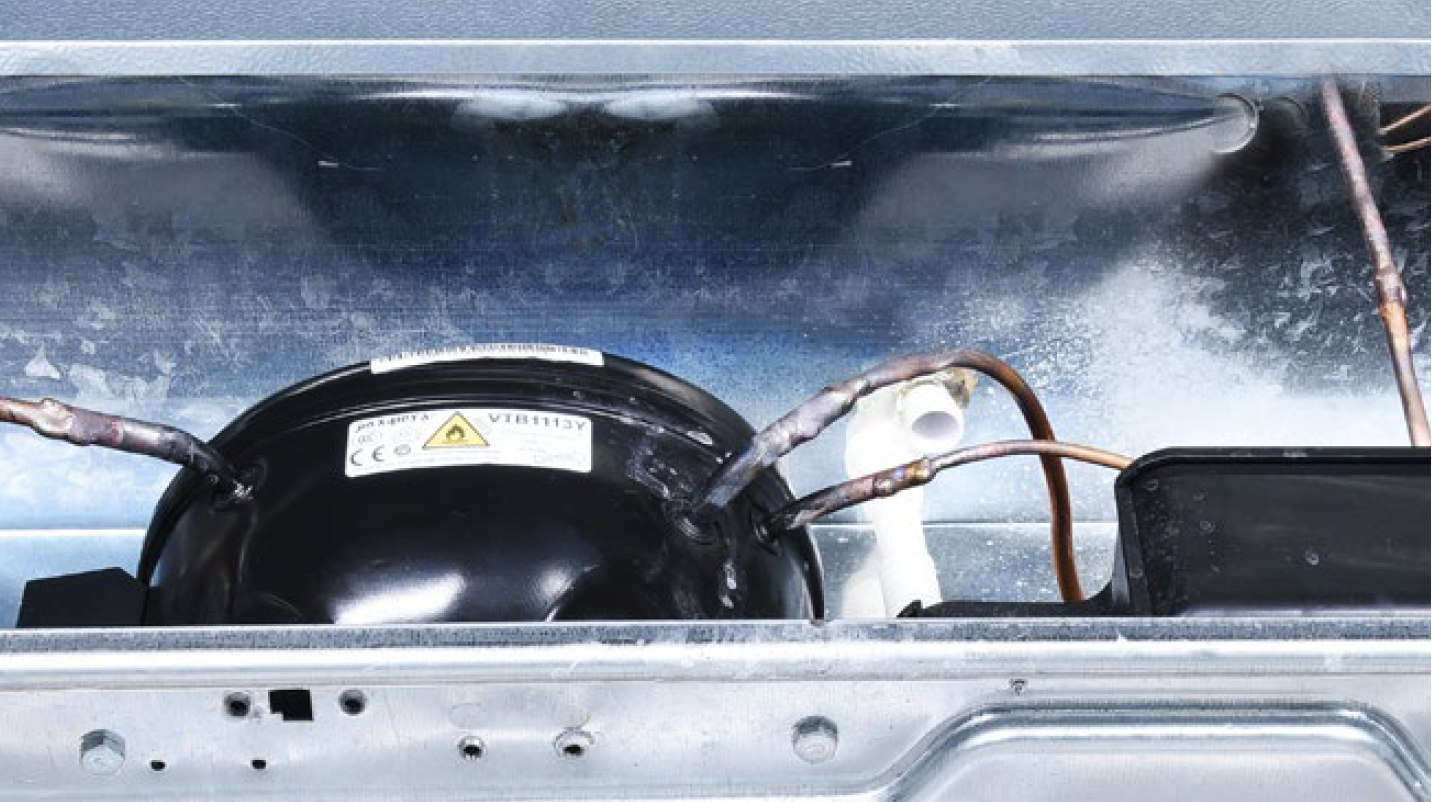
PROCEDURE 2
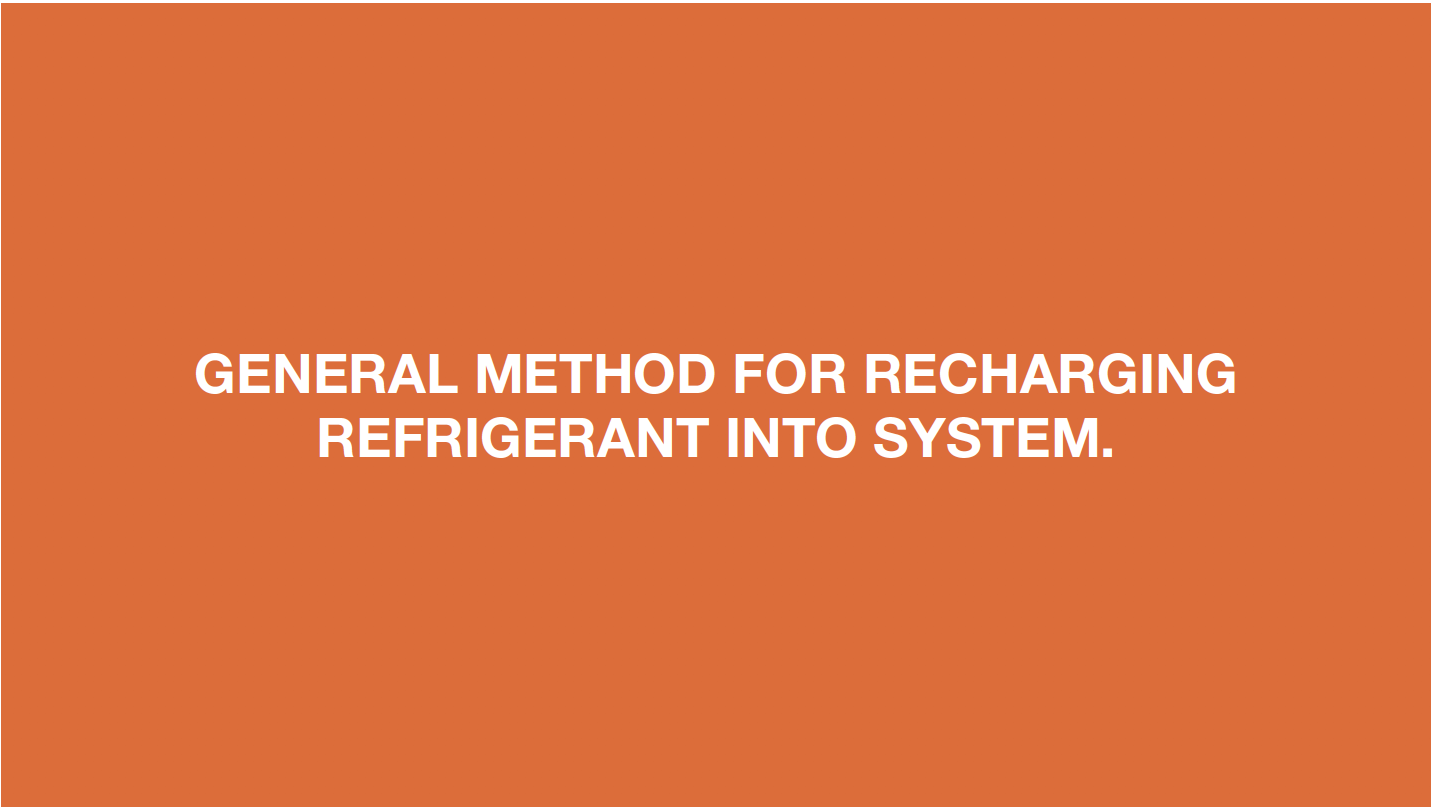
Step 1
Clean paint off of brazed joint of drying-filter.

Step 2
Cut off drying-filter.

Step 3
Cut off capillary and remove the cut end by shaking.

Step 4
Weld on a new drying-filter.
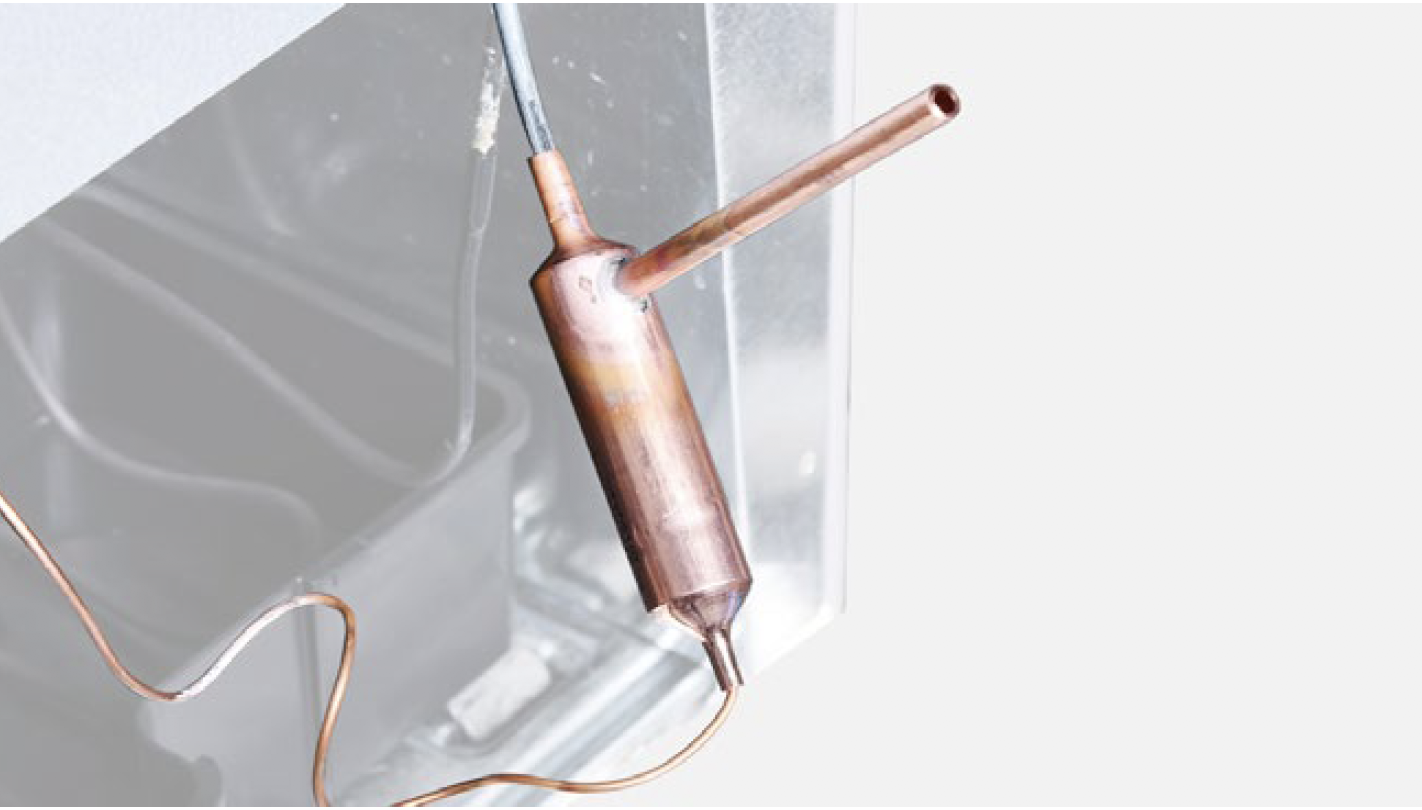
Step 5
Re-braze a copper tube onto processing tube of compressor.
To get more details on brazing requirements

NOTE
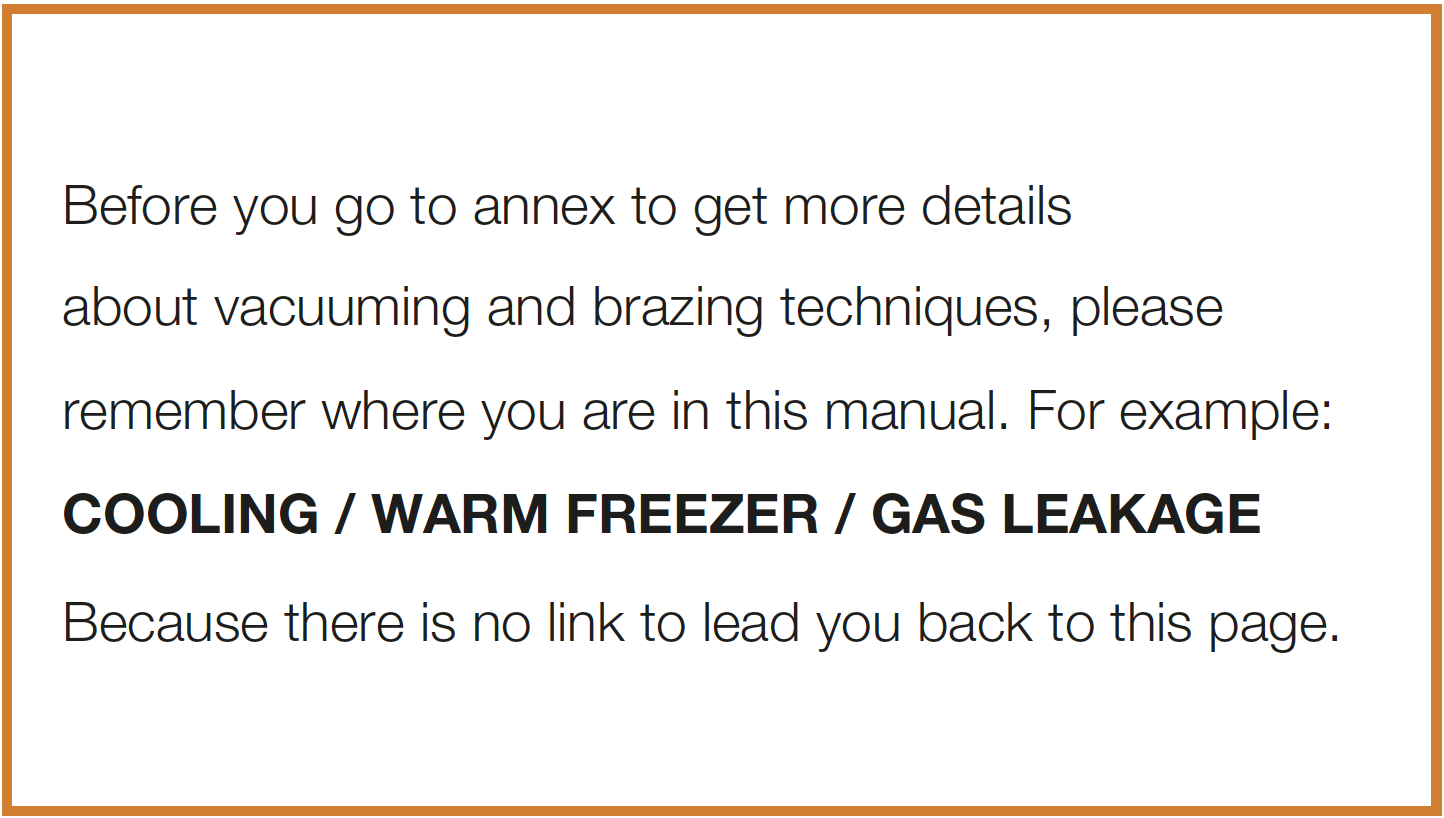
Step 6
Inject nitrogen (1.57Mpa)
through quick connector
into pipe for at least
3 min to blow remaining
refrigerant away.

Step 7
Add quick connector onto processing pipe of drying-filter.
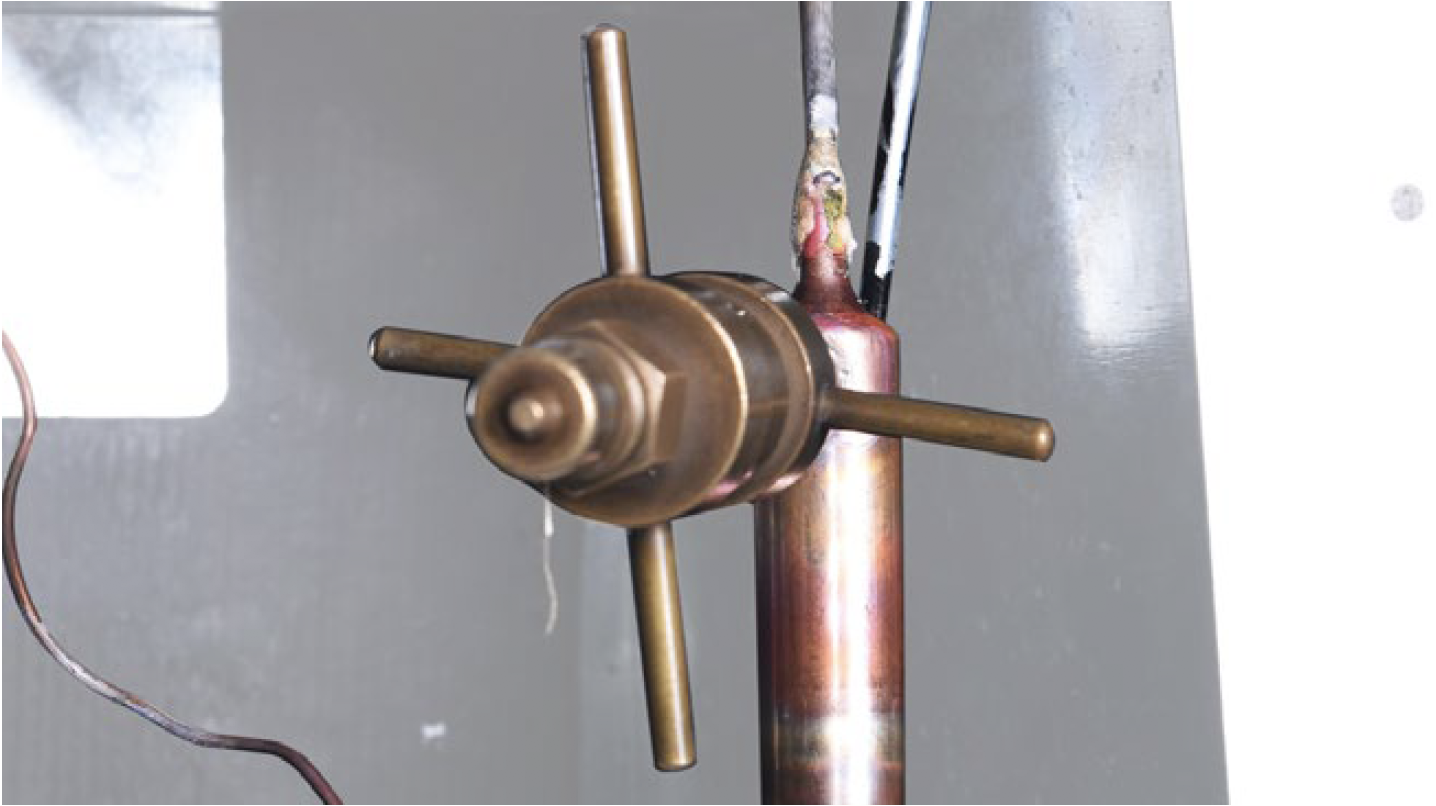
Step 8
Test on brazed joints
of drying-filter and
compressor processing
pipe.
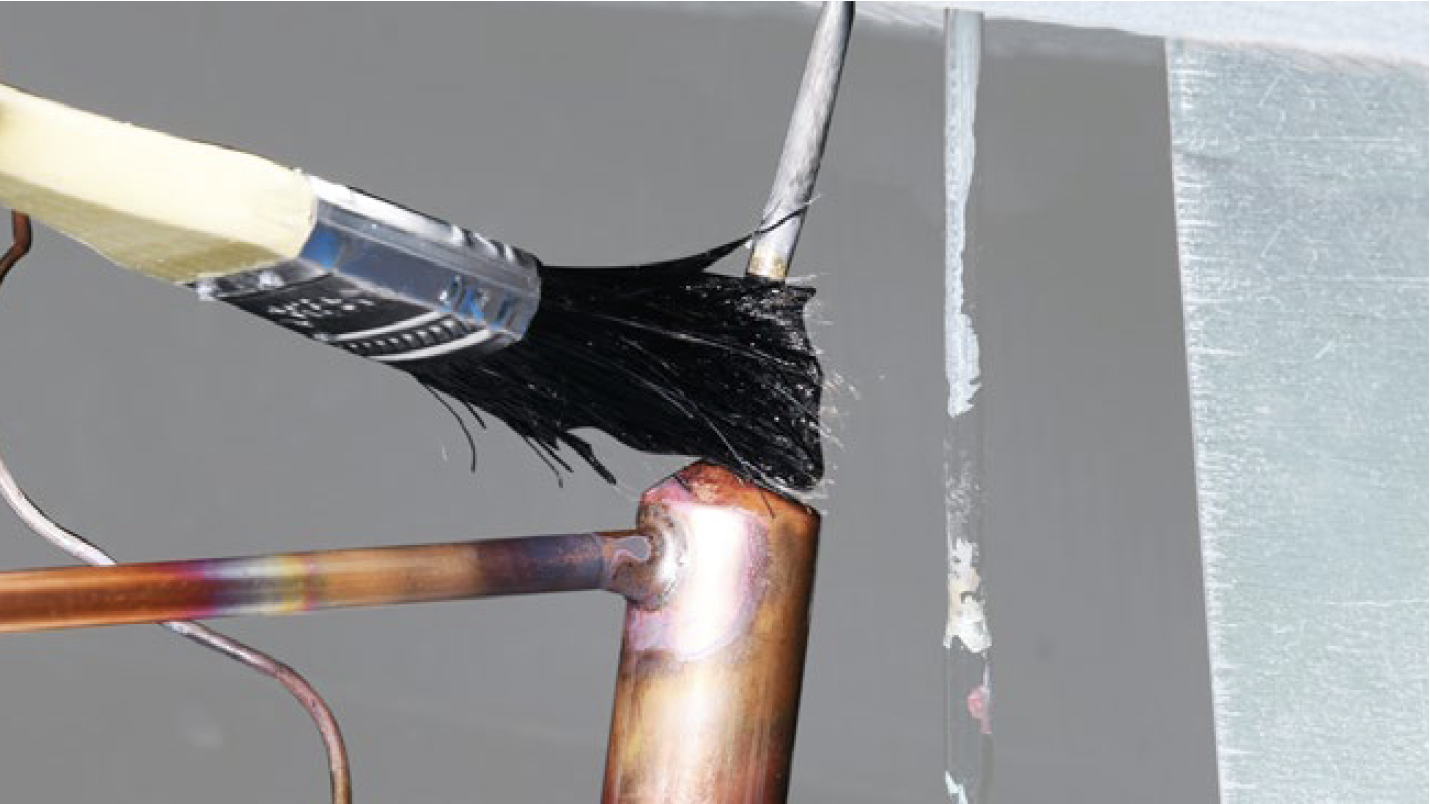
Step 9
Vacuum and recharge.
Please get more details of vacuuming and gas- charging requirements

Step 10
Block processing pipe twice by locking pliers.
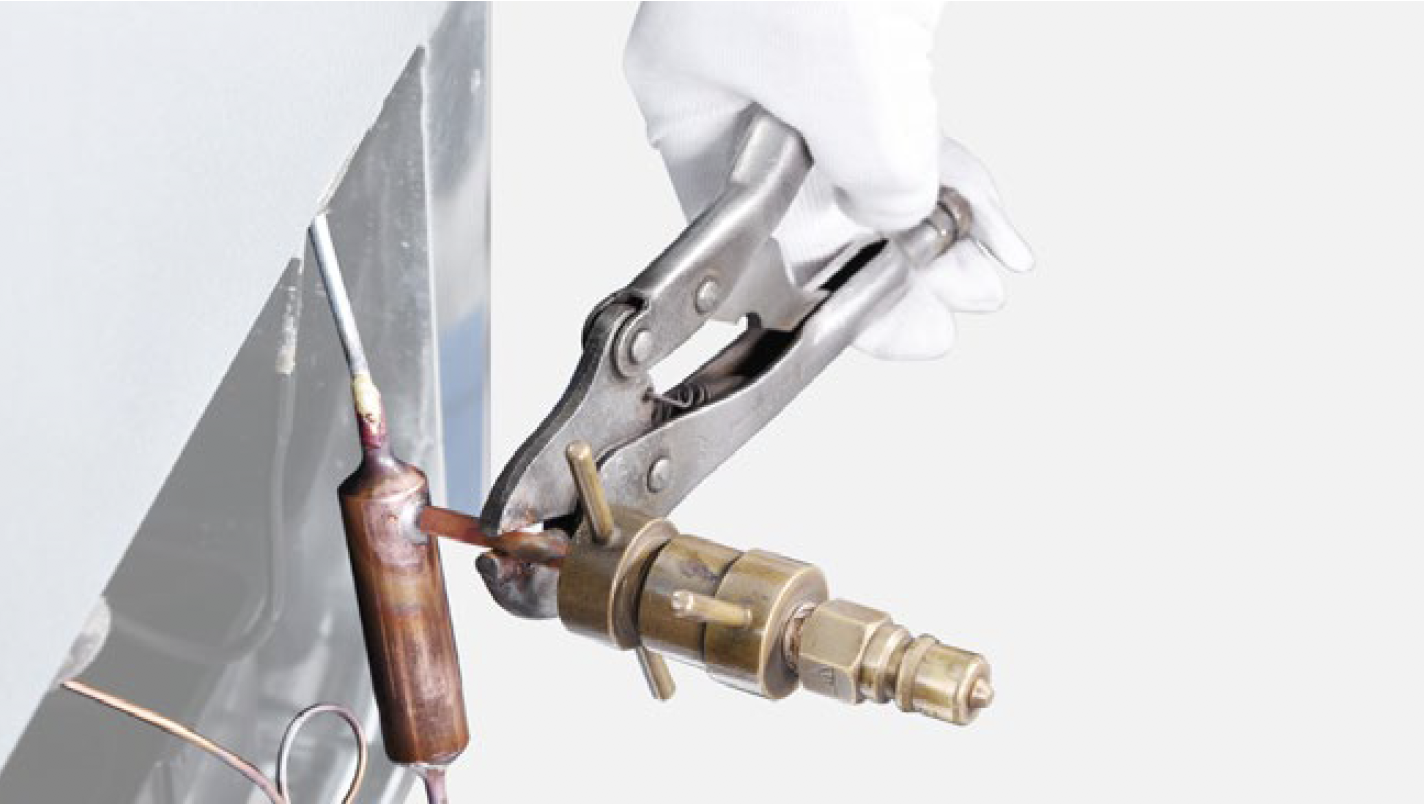
Step 11
Leave locking pliers on the second blocking and cut off the rest pipe by shaking.

Step 12
Weld the ends and remove the pliers away.
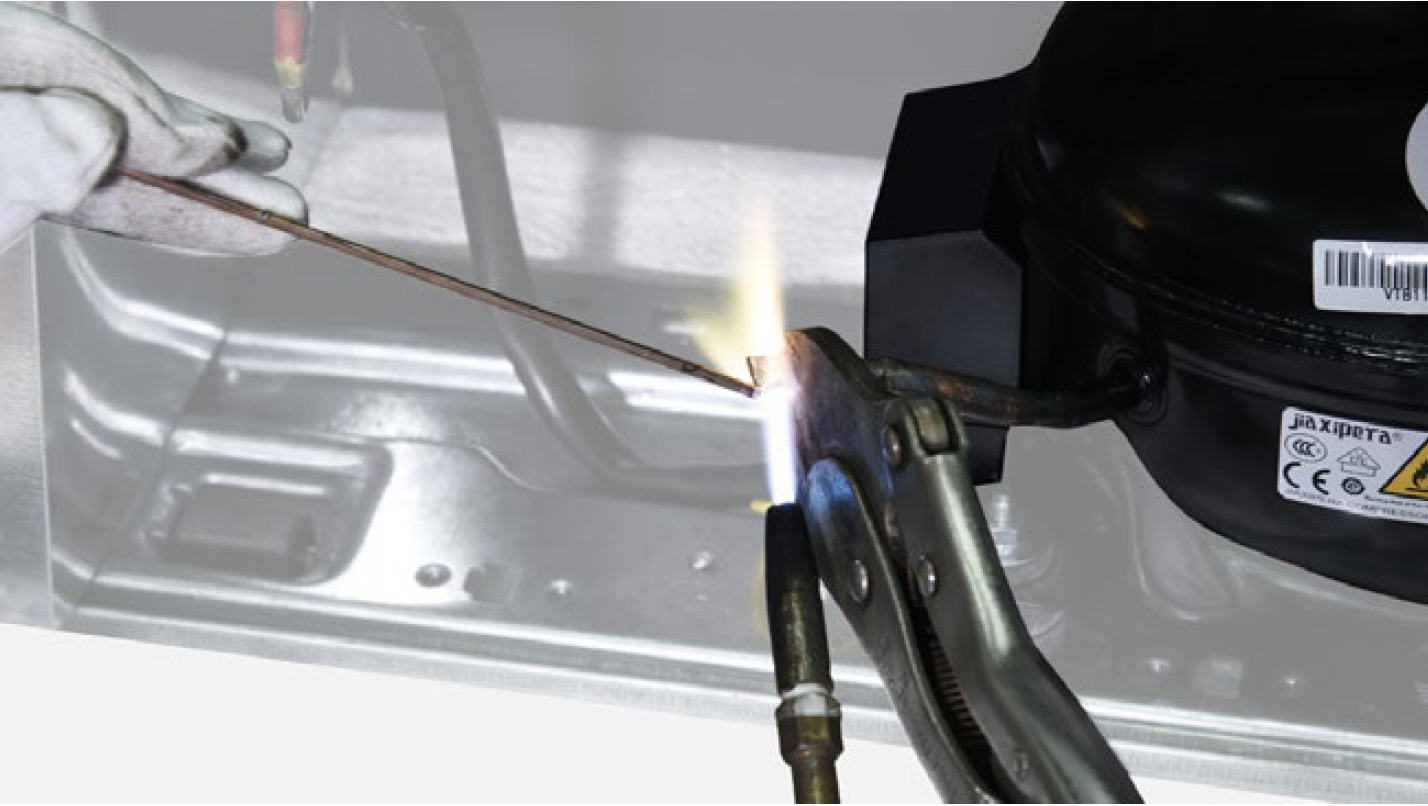

DIAGNOSIS 4
